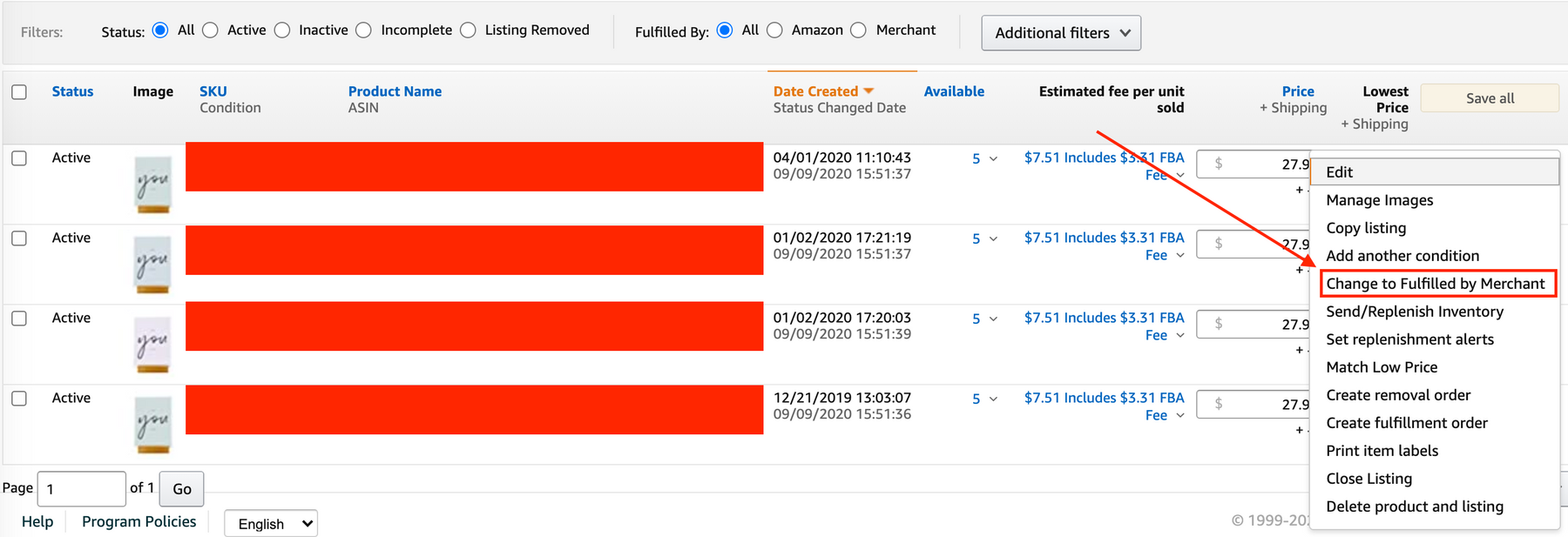What is Fulfilled By Merchant (FBM) on Amazon?
In this post I’m going to explain the following:
- What is fulfilled by merchant (FBM)?
- How to configure FBM in seller central?
- What you should consider when choosing FBM?
What is fulfilled By Merchant (FBM)?
Fulfilled by Merchant is when you the seller are responsible for the shipping and fulfillment of customer orders.
For every Amazon listing in your seller central account the shipping method is either set to Fulfilled By Merchant (FBM) or Fulfilled By Amazon (FBA).
When a listing is set to FBM that communicates to Amazon you will ship and fulfill all orders that come through Amazon for that listing. For listings that are set to FBM you are completely responsible for the cost and logistics of how your product gets to the customer that ordered it.
This shipping method in seller central is set on a per listing basis. Meaning not all of your listings have to be set to FBM, and not all your listings have to be set to FBA. In fact, it is quite common for some seller central accounts to have some listings that are set to FBM and others to FBA.
How to configure FBM in seller central?
When you create a new listing in seller central by default the listing is set to FBM. If you set a listing to FBA and would like to change it back you can do so with the following steps:
- Navigate to the topmost navigation in seller central and hover your mouse over “Inventory”.

2. From the dropdown menu select “Manage Inventory”.

3. Find the listing you want to change to FBM and click the drop down next to the edit button.

4. From the dropdown menu select “Change to Fulfilled by Merchant”.

5. Press the “convert” button.

What to consider when choosing Fulfilled By Merchant (FBM).
There is no right or wrong way to fulfill Amazon orders, just so long as the customer gets their order on time and the product is undamaged.
The main things you have to consider when choosing to have a listing set to FBM vs FBA are costs, tradeoffs, and convenience.
Costs
Start by comparing the cost of fulfilling orders yourself to the cost of Amazon fulfilling your orders.
How do those fees compare to your cost to fulfill that order yourself?
What are your storage fees?
How much does it cost to store your inventory yourself vs at an Amazon warehouse?
With the cost of fulfillment and storage calculated you can determine if FBM is cheaper than FBA.
Tradeoffs
In addition to cost, you need to consider the tradeoffs that come with choosing FBM over FBA.
Unless you already have a warehouse that can deliver something known as Seller Fulfilled Prime, if your Amazon listing is set to FBM, it will not have the prime label.
At the writing of this post, in the United States there are over 112 million Amazon prime customers.
These 112 million customers have a strong incentive to shop Amazon listings that offer the prime label over ones that don’t, because it means they get free two day shipping from Amazon.
If you’re selling in an Amazon category where not many of your competitor’s listings are available for prime then perhaps you aren’t losing out on a ton of sales by not having it.
However, in that scenario you need to consider that if your listing did have the prime label it would be a competitive advantage over the competition.
One advantage that only FBM offers is complete control of the packaging your product is shipped in.
If control over those finer details is important to you and your brand then you’ll have to do FBM.
All FBA fulfilled listings will be shipped in Amazon prime branded boxes.
Convenience
The question of convenience can be answered based on the order volume of a listing.
If the order volume for one of your Amazon listings is quite high then it may be far more convenient to outsource the fulfillment of that listings orders to Amazon instead of doing it yourself.
If the order volume for one of your Amazon listings is quite low then maybe the effort to prep and send your units to FBA just isn’t worth it to you.
Conclusion
When deciding to have a listing be fulfilled by merchant (FBM) calculate the costs of your fulfillment and storage fees, and compare that to Amazon’s cost for FBA.
If your FBM option doesn’t allow for Seller Fulfilled Prime, consider the the competitive advantage you’re giving up by not having your listings available for prime two day delivery.
Lastly, take into account what is more convenient for you. Does the listing get enough orders that outsourcing the fulfillment to a third party like Amazon would be a huge time saver? Or is the order volume low enough that the effort to set up a third party be more of a hassle than just shipping yourself?